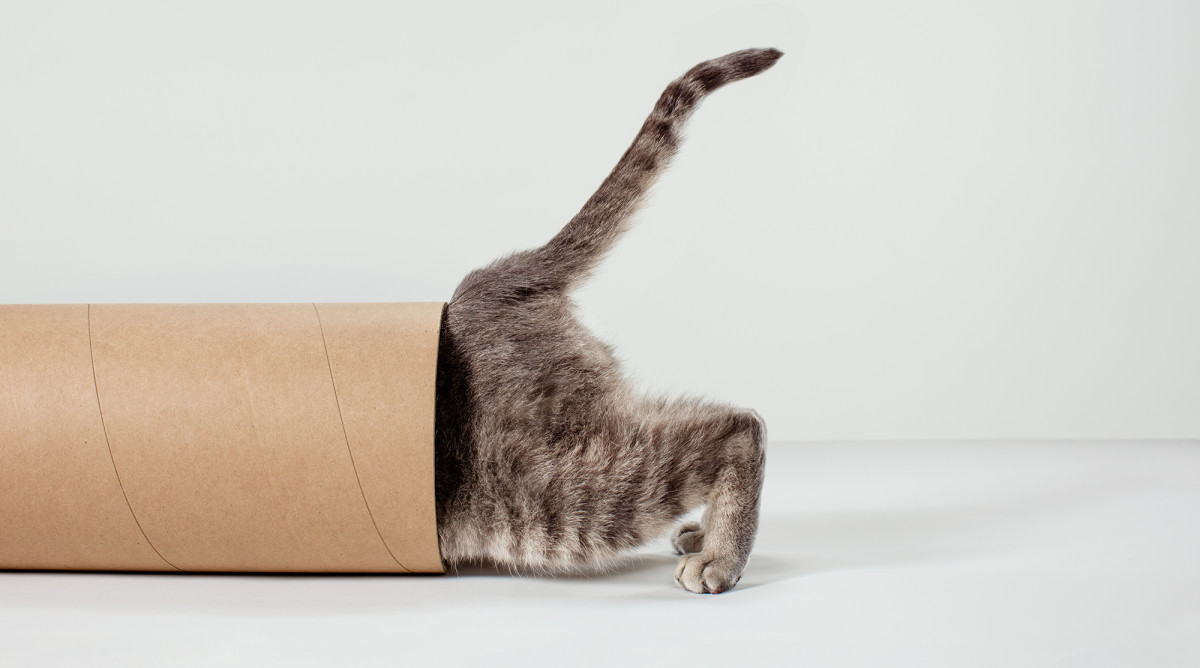The Five Dimensions of Curiosity

心理学家收集了大量证明好奇心有诸多益处的研究资料。好奇心提高智力:某研究发现,好奇心强的3岁-11岁孩童在智力测验中成绩提升幅度更大,比缺乏好奇心的同伴高出12个点。好奇心增强毅力或韧性:研究表明,仅仅将某天描述成充满好奇心(而非无比快乐)的一天,都能多增加20%身体和精神的能量。好奇心还有助于我们提高参与度和绩效,实现更有意义的目标:在心理学入门课中表现出更强好奇心的学生,比其他学生更享受课程,期末成绩会更高,之后还会报名更多心理学课程。
Psychologists have compiled a large body of research on the many benefits of curiosity. It enhances intelligence: In one study, highly curious children aged three to 11 improved their intelligence test scores by 12 points more than their least-curious counterparts did. It increases perseverance, or grit: Merely describing a day when you felt curious has been shown to boost mental and physical energy by 20% more than recounting a time of profound happiness. And curiosity propels us toward deeper engagement, superior performance, and more-meaningful goals: Psychology students who felt more curious than others during their first class enjoyed lectures more, got higher final grades, and subsequently enrolled in more courses in the discipline.
但我们认为,另一流派的好奇心研究也很重要。自20世纪50年代以来,心理学家试图找到决定好奇程度的因素,并提出了相互矛盾的理论。我们现在决定不将好奇心视为一种特质,而是从中分化出五个不同维度。我们不会问“你的好奇心有多强”;相反,我们的问题是,“你的好奇心是怎样的”。
But another stream of research on curiosity is equally important, in our view. Since the 1950s psychologists have offered competing theories about what makes one person more curious than another. Rather than regard curiosity as a single trait, we can now break it down into five distinct dimensions. Instead of asking, “How curious are you?” we can ask, “How are you curious?”
好奇心简史
A Brief History
20世纪50年代,心理学家丹尼尔·伯莱因(Daniel Berlyne)提出关于好奇心的完整模型并成为该领域的先驱之一。他指出,我们会在两种极不舒适的状态之间寻找平衡点:缺乏刺激(应对缺乏新鲜事物、复杂性、不确定性或冲突的任务、人和环境)和过度刺激。在寻找平衡时,我们或使用伯莱因所谓的“消遣性好奇心”(diversive curiosity,无聊的人寻找任何让自己兴奋的事情),或使用“认知性好奇心”(specific curiosity,过度兴奋的人试图了解原因,以便将兴奋度降低到可控范围内)。
In the 1950s Daniel Berlyne was one of the first psychologists to offer a comprehensive model of curiosity. He argued that we all seek the sweet spot between two deeply uncomfortable states: understimulation (coping with tasks, people, or situations that lack sufficient novelty, complexity, uncertainty, or conflict) and overstimulation. To that end we use either what Berlyne called “diversive curiosity” (as when a bored person searches for something—anything—to boost arousal) or what he called “specific curiosity” (as when a hyperstimulated person tries to understand what’s happening in order to reduce arousal to a more manageable level).
基于伯莱因的洞见,卡耐基梅隆大学的乔治·卢文斯坦(George Loewenstein)于1994年提出了“信息差”(information gap)理论。他假设,当人们意识到自己缺乏想学的知识,就会感到好奇,进而产生对不确定性的厌恶,刺激他们寻找缺失的信息。
Building on Berlyne’s insights, in 1994 George Loewenstein, of Carnegie Mellon University, proposed the “information gap” theory. He posited that people become curious upon realizing that they lack desired knowledge; this creates an aversive feeling of uncertainty, which compels them to uncover the missing information.
但上述理论关注的是我们缓解紧张的内在欲望,并未解释好奇心的其他表达方式,比如游客在博物馆里闲逛、创业家仔细研究beta测试的反馈、读者全神贯注阅读书籍。对于这种情况,罗切斯特大学的爱德华·德西(Edward Deci)于20世纪70年代指出,好奇心还反映了我们“追求新鲜感和挑战、拓展和实践自身能力、探索和学习”的内在动机。我们不仅用好奇心避免不适感,还能获得积极的体验。
But these theories, focused on our inherent desire to reduce tension, don’t explain other expressions of curiosity: tourists strolling through a museum, entrepreneurs poring over feedback from beta testing, people engrossed in a book. The University of Rochester’s Edward Deci addressed those in the 1970s, arguing that curiosity also reflects our intrinsic motivation “to seek out novelty and challenges, to extend and exercise one’s capacities, to explore, and to learn.” We use it not just to avoid discomfort but to generate positive experiences.
此外,特拉华大学的心理学家马文·朱克曼(Marvin Zuckerman)自20世纪60年代到21世纪初,用了50年时间研究寻求刺激的心理,或者说愿意为寻求新鲜、强烈、不同的体验而冒险。康斯坦茨大学的心理学家布里塔·雷纳(Britta Renner)于2006年着手研究社交好奇心,也就是人们对其他人思考方式、感受和行为的兴趣。
In another body of work, the University of Delaware psychologist Marvin Zuckerman spent five decades (from the 1960s to the 2000s) studying sensation seeking, or the willingness to take risks to acquire varied, novel, and intense experiences. And in 2006 the psychologist Britta Renner, of the University of Konstanz, initiated the study of social curiosity, or people’s interest in how other individuals think, feel, and behave.
五大维度模型
The Five-Dimensional Model
结合上述研究以及其他重要调研,我们和乔治梅森大学的同事帕特里克·麦克奈特(Patrick McKnight)合作创建了好奇心的五大维度模型。第一个维度为被剥夺感(deprivation sensitivity),源于伯莱因和卢文斯坦的研究,指发现信息差,而填补这部分知识空白有助于舒缓神经。这种好奇不一定让你感觉良好,但你会坚持不懈地解决问题。
Synthesizing this and other important research, and in conjunction with our George Mason colleague Patrick McKnight, we created a five-dimensional model of curiosity. The first dimension, derived from Berlyne and Loewenstein’s work, is deprivation sensitivity—recognizing a gap in knowledge the filling of which offers relief. This type of curiosity doesn’t necessarily feel good, but people who experience it work relentlessly to solve problems.
第二大维度为快乐探索(joyous exploration),受德西的研究影响,指对大千世界的种种奇妙感到惊叹不已。这是令人愉悦的状态;有这种好奇心的人会享受生活的乐趣。
The second dimension, influenced by Deci’s research, is joyous exploration—being consumed with wonder about the fascinating features of the world. This is a pleasurable state; people in it seem to possess a joie de vivre.
第三大维度为社交好奇(social curiosity),源于雷纳的研究,指通过与他人谈话、倾听和观察,了解对方的想法和行为。人类本身就是社交动物,判断对方是敌是友的最有效和高效的方式是获取信息。有些人甚至可能会采取窥探、窃听、八卦等手段。
The third dimension, stemming from Renner’s research, is social curiosity—talking, listening, and observing others to learn what they are thinking and doing. Human beings are inherently social animals, and the most effective and efficient way to determine whether someone is friend or foe is to gain information. Some may even snoop, eavesdrop, or gossip to do so.
第四大维度为抗压能力(stress tolerance),基于北卡罗来纳大学格林波若分校的心理学家保罗·西尔维亚(Paul Silvia)的近期研究,指愿意接受,甚至控制新鲜事物引发的焦虑。缺乏该能力的人可以看到信息差、发出惊叹,也对他人感兴趣,但不能向前推进迈出一步,进行探索。
The fourth dimension, which builds on recent work by Paul Silvia, a psychologist at the University of North Carolina at Greensboro, is stress tolerance—a willingness to accept and even harness the anxiety associated with novelty. People lacking this ability see information gaps, experience wonder, and are interested in others but are unlikely to step forward and explore.
第五大维度为寻求刺激(thrill seeking),受朱克曼启发,指愿意承担身体、社会和财务风险,追求不同、复杂和强烈的体验。对拥有这种能力的人来说,新事物引发的焦虑可以放大,不可减少。
The fifth dimension, inspired by Zuckerman, is thrill seeking—being willing to take physical, social, and financial risks to acquire varied, complex, and intense experiences. For people with this capacity, the anxiety of confronting novelty is something to be amplified, not reduced.
我们用多种方式测试了五大维度模型。我们和时代杂志集团(Time Inc.)在全美范围内展开调查,试图发现哪个维度的好奇心效果最好,而且分别能带来哪些好处。举例来说,快乐探索与积极、强烈的情感体验有最直接的关系。抗压能力与满足被认可、独立自主和寻求归属的需求有最直接的关系。社交好奇与善良谦逊、乐于助人的品质有最直接关系。
We have been testing this model in several ways. With Time Inc. we conducted surveys across the United States to discover which of the dimensions lead to the best outcomes and generate particular benefits. For instance, joyous exploration has the strongest link with the experience of intense positive emotions. Stress tolerance has the strongest link with satisfying the need to feel competent, autonomous, and that one belongs. Social curiosity has the strongest link with being a kind, generous, modest person.
我们与默克集团合作调查了好奇心在工作中的表达方式以及人们的态度。我们对来自中国、德国和美国的3000名员工的调查显示,84%的人认为好奇心可以激发创意,74%的人认为好奇心可以启发独特且有头脑的人才,63%的人认为好奇心对职位晋升有帮助。其他针对多个事业部和地域的研究证明,快乐探索、被剥夺感、抗压能力和社交好奇这四大维度有助于提升工作业绩。后两个维度尤为重要:如果员工没有抗压能力,就不太可能寻求挑战和资源并表达异议,反而容易感到虚弱沮丧,参与度大幅降低。有社交好奇的员工则更擅长化解同事之间的冲突,更可能得到社会支持,更高效地建立联系、信任和忠诚的团队关系。在这两大维度得分都较高的人或群体,更具创新能力和创造力。
With Merck KGaA we have explored attitudes toward and expressions of work-related curiosity. In a survey of 3,000 workers in China, Germany, and the United States, we found that 84% believe that curiosity catalyzes new ideas, 74% think it inspires unique, valuable talents, and 63% think it helps one get promoted. In other studies across diverse units and geographies, we have found evidence that four of the dimensions—joyous exploration, deprivation sensitivity, stress tolerance, and social curiosity—improve work outcomes. The latter two seem to be particularly important: Without the ability to tolerate stress, employees are less likely to seek challenges and resources and to voice dissent and are more likely to feel enervated and to disengage. And socially curious employees are better than others at resolving conflicts with colleagues, more likely to receive social support, and more effective at building connections, trust, and commitment on their teams. People or groups high in both dimensions are more innovative and creative.
从单一角度诠释好奇心,还不足以解释这一特质如何帮助我们在生活和工作中获得成功和满足感。为发掘和利用人才、建立整体力量大于部分之和的团队,我们需要一个更周密的方法。
A monolithic view of curiosity is insufficient to understand how that quality drives success and fulfillment in work and life. To discover and leverage talent and to form groups that are greater than the sum of their parts, a more nuanced approach is needed.
托德·卡什丹(Todd B. Kashdan)、戴维·迪沙巴托(David J. Disabato)、费伦·古德曼(Fallon R. Goodman)、卡尔·诺顿(Carl Naughton)|文
托德·卡什丹(Todd B. Kashdan)是乔治梅森大学心理学教授,也是该校幸福感提升中心的高级研究员。戴维·迪沙巴托(David J. Disabato)和费伦·古德曼(Fallon R. Goodman)是乔治梅森大学临床心理学的博士研究生。卡尔·诺顿(Carl Naughton)是语言学家兼教学科学家。前三位作者为时代杂志集团提供咨询服务,所有作者都为默克集团提供咨询服务。





